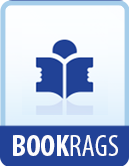Last of all, brought out only on state occasions, was a most seductive edition of that nursery Gaboriau, “Who Killed Cock Robin?” with colored illustrations in which the heads of the birds were made to move oracularly, by means of cunningly arranged strips pulled from the bottom of the page. This was a relic of infancy, our first introduction to the literature of plot, counterplot, intrigue, and crime, and the mystery of the murder was very real to us. This book, still in existence, with all the birds headless from over-exertion, is always inextricably associated in my mind with childish woes, as a desire on my part to make the birds wag their heads was always contemporaneous, to a second, with a like desire on my sister’s part; and on those rare days when the precious volume was taken down, one of us always donned the penitential nightgown early in the afternoon and supped frugally in bed, while the other feasted gloriously at the family board, never quite happy in her virtue, however, since it separated her from beloved vice in disgrace. That paltry tattered volume, when it confronts me from its safe nook in a bureau drawer, makes my heart beat faster and sets me dreaming! Pray tell me if any book read in your later and wiser years ever brings to your mind such vivid memories, to your lips so lingering a smile, to your eye so ready a tear? True enough, “we could never have loved the earth so well if we had had no childhood in it.... What novelty is worth that sweet monotony where everything is known and loved because it is known?”
This autobiographical babble is excusable for one reason only.
It is in remembering what books greatly moved us in earlier days; what books wakened strong and healthy desires, enlarged the horizon of our understanding, and inspired us to generous action, that we get some clue to the books with which to surround our children; and a reminiscence of this kind becomes a sort of psychological observation. The moment we realize clearly that the books we read in childhood and youth make a profound impression that can never be repeated later (save in some rare crisis of heart and soul, where a printed page marks an epoch in one’s mental or spiritual life), then we become reinforced in our opinion that it makes a deal of difference what children read and how they read it.
Agnes Repplier says: “It is part of the irony of life that our discriminating taste for books should be built up on the ashes of an extinct enjoyment.”
A book is such a fact to children, its people are so alive and so heartily loved and hated, its scenes so absolutely real! Prone on the hearth-rug before the fire, or curled in the window seat, they forget everything but the story. The shadows deepen, until they can read no longer; but they do not much care, for the window looks into an enchanted region peopled with brilliant fancies. The old garden is sometimes the Forest of Arden, sometimes the Land of Lilliput, sometimes the Border. The gray rock on the river bank is now the cave of Monte Cristo, and now a castle defended by scores of armed knights who peep one by one from the alder-bushes, while Fair Ellen and the lovely Undine float together on the quiet stream.




